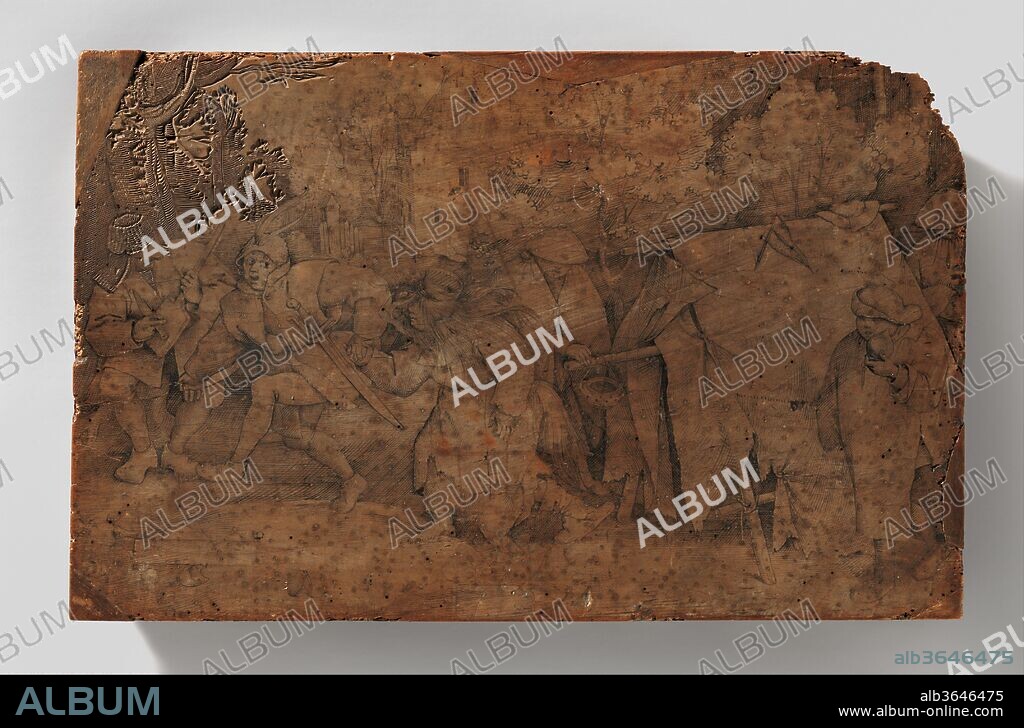alb3646475
PIETER BRUEGEL THE ELDER. The Dirty Bride or The Wedding of Mopsus and Nisa

|
Ajouter à une autre Lightbox |
|
Ajouter à une autre Lightbox |



Avez-vous déjà un compte? S'identifier
Vous n'avez pas de compte ? S'inscrire
Acheter cette image.
Sélectionnez l'usage:

Titre:
The Dirty Bride or The Wedding of Mopsus and Nisa
Légende:
Voir la traduction automatique
The Dirty Bride or The Wedding of Mopsus and Nisa. Artist: Pieter Bruegel the Elder (Netherlandish, Breda (?) ca. 1525-1569 Brussels). Dimensions: Overall: 10 3/8 x 16 3/8 x 1 1/8 in. (26.4 x 41.6 x 2.9 cm). Date: ca. 1566.
This remarkable drawing represents a group of street performers putting on a comic folk play, The Dirty Bride (De Vuile Bruid) on the occasion of Shrovetide, the three days before Ash Wednesday. The coarse, bedraggled bride being led from a shabby nuptial tent is Nisa, while the prancing groom who leads her out is Mopsus. The account of their marriage derives from the Eighth Eclogue of the Roman poet Virgil, but also appeared in several contemporary books of proverbs, in which it was used to indicate a world turned upside down. In this print after Bruegel's drawing, which was engraved by Pieter van der Heyden and published by Hieronymus Cock in 1570, a Latin inscription was added below the image that translates "Mopsus marries Nisa, what may not we lovers hope for"--i.e., anything can happen. The learned members of Bruegel's and Cock's audience surely would have appreciated the association of the ancient quotation with a contemporary folk custom at Shrovetide, the season of festivity just before Lent. The drawing was originally meant to serve as the design for a woodcut but, for an unknown reason, the carving of the block was abandoned after cutting in the upper left corner was carried out. Presumably it was Bruegel's death in 1569 that brought the design into the publisher's hands and to fruition as an engraving.
Technique/matériel:
Pen and black-brown ink on white-prepared partially carved block of applewood
Musée:
Metropolitan Museum of Art, New York, USA
Crédit:
Album / Metropolitan Museum of Art, NY
Autorisations:
Taille de l'image:
4318 x 2847 px | 35.2 MB
Taille d'impression:
36.6 x 24.1 cm | 14.4 x 9.5 in (300 dpi)
 Pinterest
Pinterest Twitter
Twitter Facebook
Facebook Copier le lien
Copier le lien Email
Email
